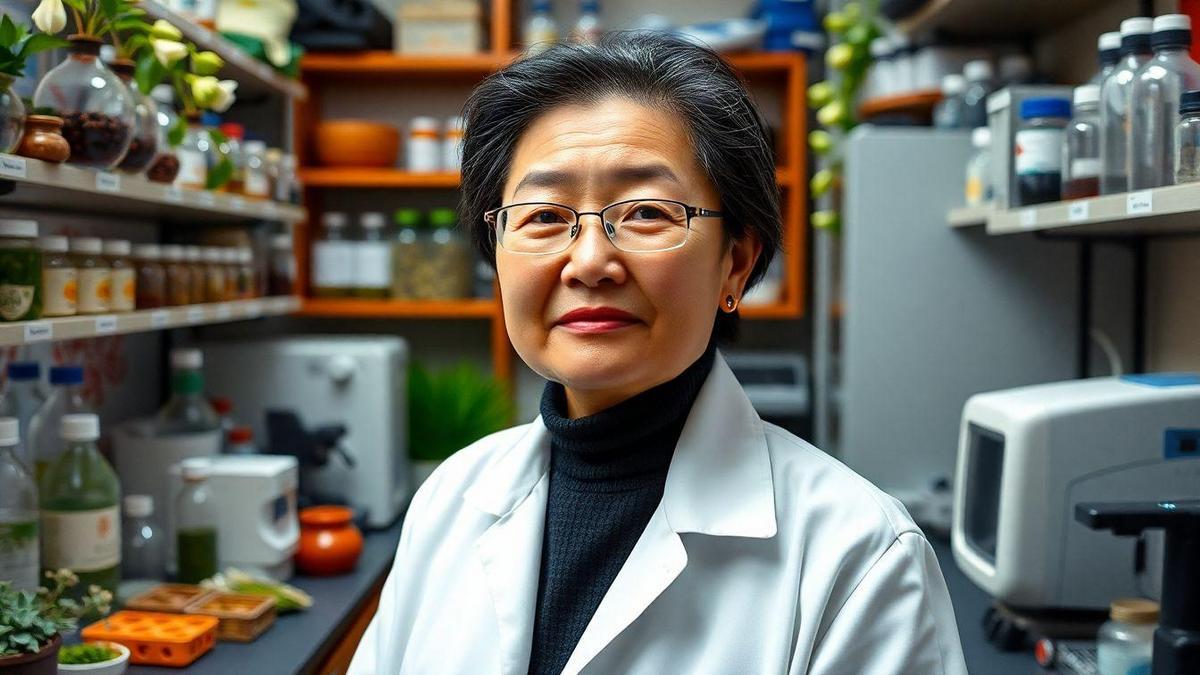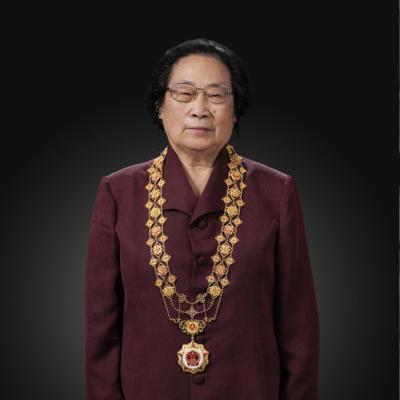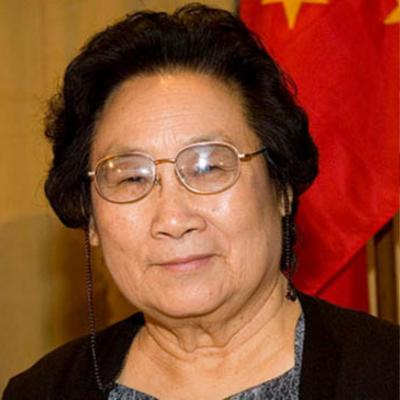Anúncios
Tu Youyou’s trajectory represents a remarkable convergence between tradition and modern science, offering a new direction for malaria treatment. Her research based on Traditional Chinese Medicine (TCM) culminated in the discovery of artemisinin, revolutionizing the fight against this disease. By combining ancestral wisdom with scientific rigor, she provided a vital breakthrough in global medicine.
This collaboration between ancient knowledge and scientific innovation shows that effective solutions can emerge from valuing practices often marginalized. Tu Youyou proved that TCM has a prominent place in the fight against modern diseases. Her legacy opens doors to a more integrative, accessible, and culturally respectful medicine.
Anúncios

The role of artemisinin in the revolution of malaria treatment
Artemisinin was a historic milestone in the fight against malaria, bringing hope to regions where the disease was endemic. Isolated from the plant Artemisia annua, this compound showed fast and potent action against the parasite that causes malaria. Its effectiveness transformed treatment protocols around the world.
Unlike other drugs, artemisinin acts quickly in the body, eliminating a large portion of the parasites within a few days. This immediate impact is vital to prevent complications and deaths, especially in areas with poor medical infrastructure. Its global adoption helped contain outbreaks and reduce mortality.
Beyond its speed of action, artemisinin proved effective against strains resistant to traditional drugs. This made it essential in contexts where other treatments failed. Its use in combination therapies further strengthened its effectiveness against different parasite variants.
The success of artemisinin spurred new research into other medicinal plants used in TCM. Tu Youyou’s discovery was not just a one-time solution, but an invitation to take a closer look at traditional pharmacopoeias. Science began to see in these practices a vast and promising field.
Traditional Chinese Medicine as a source of scientific innovation
Traditional Chinese Medicine values the balance of the body and the use of plants with therapeutic properties proven by millennia of experience. This wisdom accumulated over centuries served as the foundation for the discovery of artemisinin. Tu Youyou’s work showed how these practices can be translated into science.
Many TCM remedies are the result of empirical observation and continuous use across generations. The selection of Artemisia annua as a starting point was not random, but guided by ancient records. Traditional knowledge provided the necessary direction for an effective search in nature.
The systematization of this knowledge with modern research methods enabled the scientific validation of compounds used in TCM. This bridge between the old and the new generates not only credibility but also innovation. Artemisinin is an example of how traditions can reveal contemporary solutions.
This movement reinforces the importance of respecting traditional knowledge and integrating it into formal health systems. The success of artemisinin created space for other TCM practices to gain attention, showing that modern medicine can be enriched by this collaboration.
Challenges and triumphs in Tu Youyou’s discovery

Tu Youyou faced various barriers during her scientific journey, from technological limitations to skepticism in the academic community. Amid the Cultural Revolution in China, conducting research was a challenge, especially for a woman in a leadership position. She persisted even in the face of adversity.
Without academic training abroad and without a doctorate, Tu was underestimated by many. Even so, she led a team that explored ancient texts and tested hundreds of plant extracts. Her persistence allowed the isolation of the active principle of Artemisia annua in its most effective form.
The resistance of the scientific community to using TCM as a research base also made it difficult to accept her findings. Many viewed the fusion of tradition and science with suspicion. But the effectiveness of the results spoke louder, and the international community eventually recognized her value.
The award of the Nobel Prize in Medicine in 2015 was a late, but fair, recognition of her invaluable contribution. This honor marked the beginning of a new era for science, which began to value traditional knowledge more as a legitimate source of therapeutic innovation.
How Tu Youyou and Traditional Chinese Medicine Work Together to Fight Malaria
Tu Youyou’s groundbreaking work in medicine is a testament to the power of traditional knowledge and its integration into modern science. Her dedication to understanding the properties of ancient herbal remedies led to the discovery of artemisinin, a powerful compound derived from the plant Artemisia annua. This discovery was not just an academic pursuit; it was a response to a pressing global health crisis—malaria, a disease that has plagued humanity for centuries. By harnessing the wisdom of Traditional Chinese Medicine (TCM), Tu Youyou was able to provide a new and effective treatment for malaria that has saved millions of lives.
The collaboration between Tu Youyou and Traditional Chinese Medicine is an example of how ancient practices can inform and enhance contemporary medical approaches. TCM emphasizes a holistic perspective on health, focusing not only on the symptoms of a disease but also on the overall balance of the body. This philosophy aligns well with modern medicine’s growing recognition of the importance of comprehensive treatment strategies. By combining the empirical knowledge of TCM with rigorous scientific research, Tu Youyou not only advanced malaria treatment but also opened doors to exploring the potential of traditional remedies in modern healthcare.
Global impact of artemisinin-based treatment

The artemisinin-based treatment radically changed the malaria landscape in many parts of the world. Before it, available therapeutic options faced serious resistance issues. With its introduction, success rates increased significantly.
The World Health Organization incorporated artemisinin into standard malaria treatment protocols. In combination with other medications, ACTs became an essential tool in preventing deaths. Millions of lives were saved through its application.
Besides being effective, artemisinin treatment is relatively safe and can be administered across different age groups. This makes it especially valuable in highly vulnerable regions, such as Sub-Saharan Africa. The social and economic impact of this change was profound.
The international recognition of the discovery encouraged investments in similar research. Tu Youyou’s model served as inspiration for other initiatives based on traditional knowledge. Science began to seek new solutions in regional pharmacopoeias around the world.
Advantages of Tu Youyou and Traditional Chinese Medicine in Malaria Treatment
The advantages of Tu Youyou’s contributions to malaria treatment are numerous, starting with the effectiveness of artemisinin. This compound has proven to be highly effective against Plasmodium falciparum, the deadliest strain of the malaria parasite. Unlike previous treatments, which often led to resistance, artemisinin works quickly to reduce the parasite load in the bloodstream, providing relief to patients within days. This rapid action is crucial in severe malaria cases, where timely intervention can mean the difference between life and death.
In addition, Tu Youyou’s approach through Traditional Chinese Medicine emphasizes the use of natural ingredients, which can be more accessible and affordable than synthetic drugs. In many regions where malaria is endemic, the cost of pharmaceuticals can be prohibitive. By using locally available plants, TCM offers a sustainable alternative that can empower communities to effectively combat malaria. This aspect of TCM not only addresses immediate health needs but also contributes to the economic resilience of affected populations.
Another significant advantage is the holistic approach inherent in Traditional Chinese Medicine. TCM does not only treat malaria symptoms; it seeks to restore balance and harmony within the body. This perspective can lead to improved overall health and well-being, reducing the likelihood of recurrence and enhancing the body’s ability to fight infections. Integrating TCM principles into malaria treatment protocols allows for a more comprehensive care model that considers the physical, emotional, and environmental context of the patient.
Finally, Tu Youyou’s work has sparked renewed interest in traditional medicine worldwide. Her recognition as a Nobel Prize laureate highlighted the importance of traditional knowledge systems and their potential contributions to modern medical practices. As researchers and healthcare providers increasingly seek to integrate these systems, the potential for innovative treatments and improved health outcomes expands significantly. The collaboration between traditional and modern medicine exemplifies a way forward in the fight against malaria and other diseases, promoting a more inclusive and effective healthcare landscape.
Did You Enjoy Learning About Tu Youyou and Traditional Chinese Medicine?
Learning about Tu Youyou and her remarkable contributions to malaria treatment through Traditional Chinese Medicine is both inspiring and enlightening. Her journey exemplifies the power of perseverance and the importance of integrating diverse medical practices to tackle global health challenges. The impact of her work extends beyond malaria treatment, offering valuable lessons on the potential of traditional medicine to inform modern healthcare.
As we continue to explore the intersection between traditional and modern medicine, the possibilities for innovative treatments and better health outcomes are endless. Tu Youyou’s legacy serves as a reminder of the rich tapestry of knowledge that exists within traditional healing practices and the importance of honoring and integrating these approaches into contemporary medical frameworks.
Frequently Asked Questions
Who is Tu Youyou?
Tu Youyou is a famous Chinese scientist. She discovered a medicine that treats malaria using Traditional Chinese Medicine.
How did Traditional Chinese Medicine help in treating malaria?
Traditional Chinese Medicine offers many herbs. Tu Youyou used these herbs to find effective remedies against malaria.
What is artemisinin?
Artemisinin is the substance Tu Youyou isolated from a plant. It is very effective in fighting malaria.
Why is Tu Youyou’s work important?
Her work changed malaria treatment. It saved millions of lives around the world.
Is Traditional Chinese Medicine safe?
Yes, when used correctly and under supervision. Tu Youyou and her research show that it can be very effective, especially in the fight against malaria.
